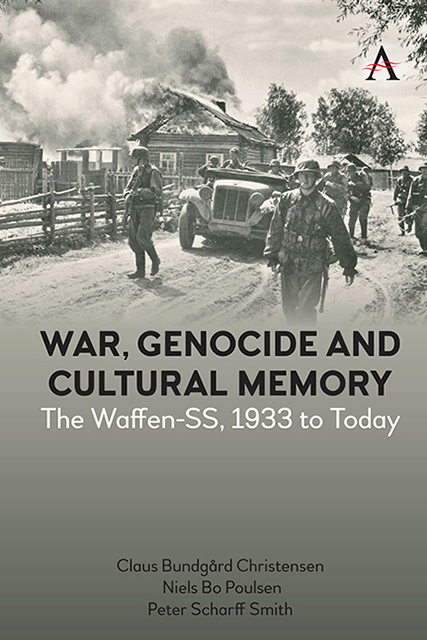Book contents
- Frontmatter
- Contents
- About the Authors
- Foreword
- Chapter One Introduction
- Part I The Organisational and Military History of the Waffen-SS
- Part II Ideology, Discipline and Punishment in the Waffen-SS
- Part III A European Nazi Army: Foreigners in the Waffen-SS
- Part IV Soldiers and War Criminals
- Part V Waffen-SS After 1945
- Epilogue The Nazi’s European Soldiers
- Appendix
- List of Abbreviations
- Bibliography
- Index
Part V - Waffen-SS After 1945
Published online by Cambridge University Press: 08 June 2023
- Frontmatter
- Contents
- About the Authors
- Foreword
- Chapter One Introduction
- Part I The Organisational and Military History of the Waffen-SS
- Part II Ideology, Discipline and Punishment in the Waffen-SS
- Part III A European Nazi Army: Foreigners in the Waffen-SS
- Part IV Soldiers and War Criminals
- Part V Waffen-SS After 1945
- Epilogue The Nazi’s European Soldiers
- Appendix
- List of Abbreviations
- Bibliography
- Index
Summary
Lost in the Post-war World?
With the demise of Nazi Germany, a historian faces difficulties tracing the approximately 600,000 SS soldiers who survived the war. Apart from the general chaos arising from the collapse of the Third Reich, there are several reasons for that. During the war, the Waffen-SS provided the basic framework for the soldiers’ lives, and it is, relatively speaking, easier to identify individual soldiers or groups of soldiers in this period. However, as the SS was disbanded this way of tracing SS-men ceased to exist. However, to some extent, the Allies kept tabs on the former Waffen-SS soldiers, whom they separated from other groups of prisoners, and it was not until their release from the prisoner-ofwar camps, from the late 1940s onwards, that most tracks of them went cold. From then on, the Waffen-SS no longer appears as a collective phenomenon. Because of the transnational and multi-ethnical character of the Waffen-SS, upon their release the soldiers dispersed in various directions; many of them adopting fairly successfully to the new circumstances, but a certain number nevertheless clung to the norms and beliefs they had been socialised into during their service in the Waffen-SS.
The trendsetting SS veterans’ association, the Hilfsgemeinschaft auf Gegenseitigkeit der Angehörigen der ehemaligen Waffen-SS (HIAG), was practically a continuation of the Waffen-SS. Nevertheless, HIAG never managed to organise more than a minor part of the veterans settling in Germany. The same goes for the relatively small Waffen-SS ex-soldiers’ organisations outside Germany. Among the challenges was also the fact that quite a few had emigrated to the USA, Latin America, the Middle East, Australia and South Africa. In the Soviet Union and the Soviet dominated parts of Eastern Europe, until the collapse of the Iron Curtain in 1989, SS-veterans had to tread especially carefully.
A significant part of the veterans, though, were deeply marked by their experiences and the Waffen-SS mentality and carried an ideological SS-heritage with them into the post-war life – orally as well as in their deeds. Politically, they busied themselves on the extreme right wing. However, the Nazi underground resistance that some Germans had hoped for, and the Allies had feared, never materialised, and the SS-veterans never represented any serious threat to the new Europe rising from the rubble after 1945.
- Type
- Chapter
- Information
- War, Genocide and Cultural MemoryThe Waffen-SS, 1933 to Today, pp. 271 - 272Publisher: Anthem PressPrint publication year: 2022

